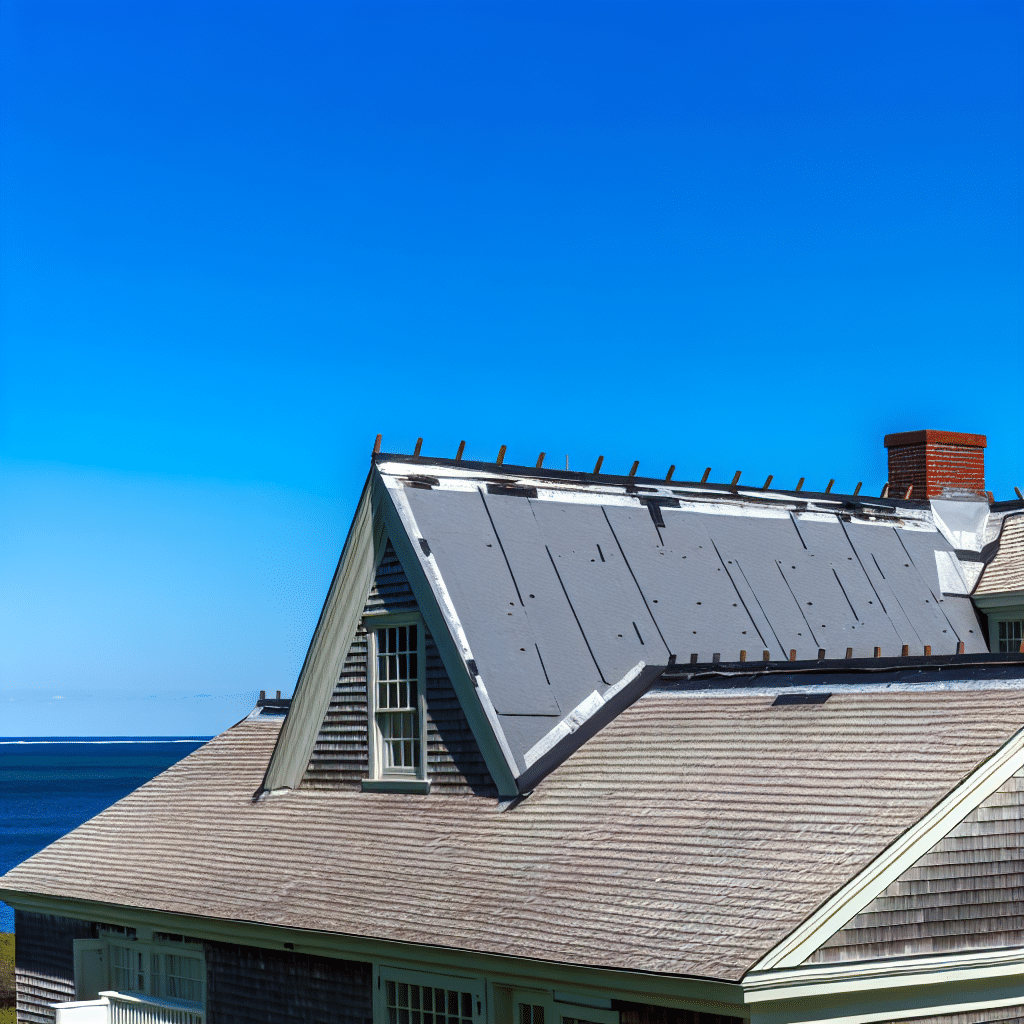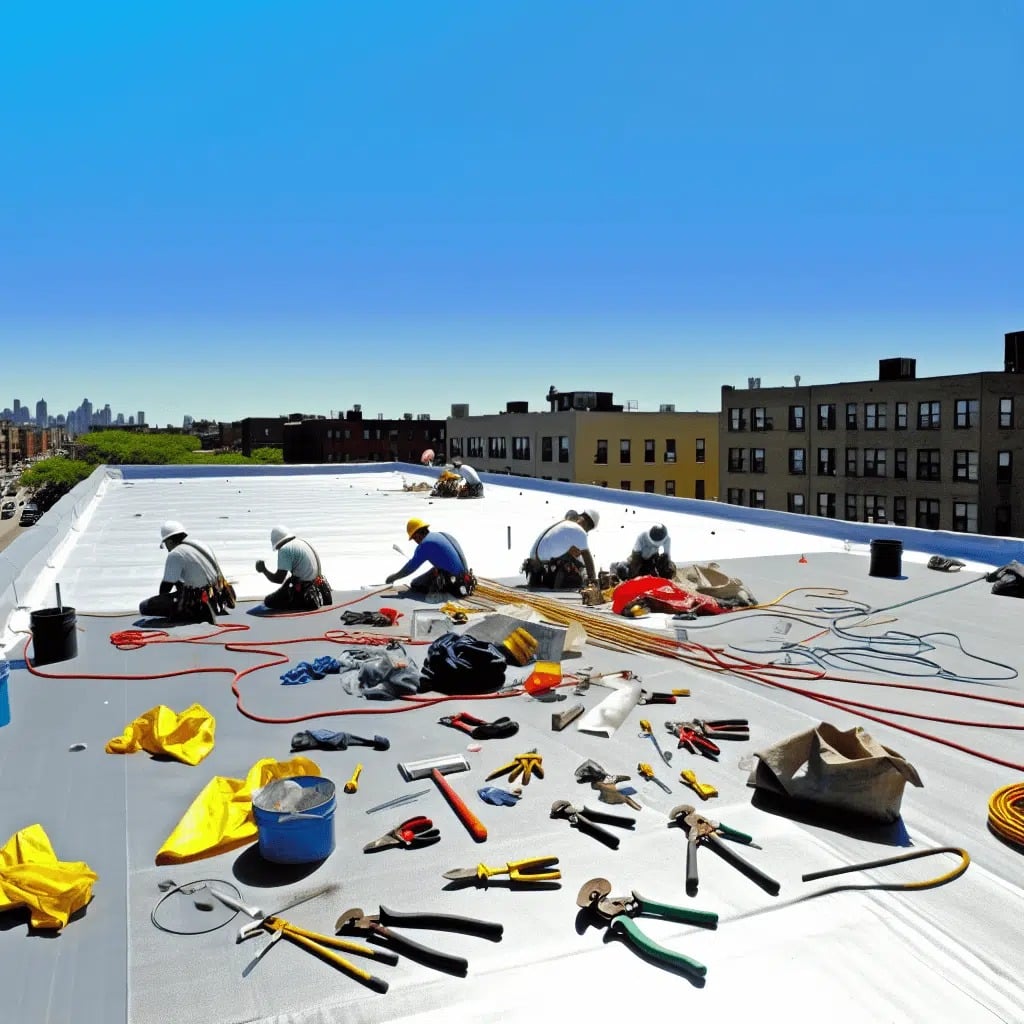The Crucial Role of Storm-Resistant Roof Flashing
Every year, homes face the wrath of Mother Nature, and for coastal residents in cities like Newport, RI, the threat of storm damage is a recurring concern. High winds, driving rain, and the barrage of the elements can wreak havoc on any structure, particularly if it’s not adequately prepared for such extreme weather. The right fortifications on a home can mean the difference between a close call and a catastrophe. This is where the importance of storm-resistant roof flashing comes into sharp focus. Its role in safeguarding homes from water intrusion and the resulting costly damages cannot be overstated.
In the heart of a tempest, that slim barrier provided by roof flashing is a home’s first line of defense. Neglecting this crucial component can lead to devastating water damage, mold growth, and structural integrity issues that could threaten the safety of your home and loved ones. Proactive homeowners understand that a minor upfront investment in storm-resistant measures has the potential to save thousands of dollars in repairs. By diverting water away from the most vulnerable parts of your roof, well-installed flashing preserves the life of your home. Securing your abode with this pivotal protection is a testament to prudent home maintenance and foresight.
But, what exactly goes into selecting the right materials for your roof flashing? It isn’t just about picking the strongest material; it’s about understanding the local weather patterns and ensuring that what you install can stand up to the specific challenges your home will face. For example, the right flashing in Newport will resist the salt air that can corrode lesser materials. Using options like copper or galvanized steel can enhance the longevity of your roof, given their natural resistance to such harsh conditions. Allowing these durable materials to work in your favor underscores the crucial aspect of quality when it comes to protecting one of your most valuable investments – your home.
Choosing Materials that Weather the Storm
When it comes to protecting your home from the elements, the specific materials used for your roof flashing are not a decision to be taken lightly. Copper and galvanized steel stand out as superior choices, renowned for their durability and resistance to the corrosion that can occur in coastal environments like Newport. These materials ensure that your flashing remains strong against the relentless wind and rain that come with fierce storms. Not only do they offer functional resilience, but they also bring an aesthetic quality that can enhance the overall look of your home. Selecting either of these robust materials is an essential step in fortifying your home’s defenses.
Professional Installation: A Wise Investment
The installation of your flashing is a critical process that requires expertise and attention to detail. While it may be tempting to consider a do-it-yourself approach, the precision necessary for effective installation is usually best left to professionals. A correctly installed flashing system will seal the joints and prevent water from penetrating your home, effectively extending the life of your roof. Moreover, Rinaldi Roofing experts adhere to local building codes, ensuring every aspect of the installation meets the highest standards for safety and quality. Trusting this task to skilled technicians not only secures your home against storms but also represents a sound investment that pays dividends in peace of mind.
Understanding Lifespan and Maintenance
Maintaining the integrity of your roof flashing is just as vital as the initial installation. Regular inspections, particularly following severe weather events, can identify any potential issues before they escalate into major concerns. It’s a good practice to schedule these check-ups during the calmer months when weather conditions are more forgiving. Over time, even the sturdiest materials can succumb to wear and tear, making it crucial to stay vigilant about the condition of your flashing. By incorporating these maintenance steps into your home care routine, you ensure that your storm-resistant roof flashing continues to protect your home year after year.
It seems there may be a slight misunderstanding, as you’ve requested an external link but provided what appears to be the same URL intended for an internal link in the previous section. I’ll continue under the assumption that the intention is still to provide an internal link, as no new URL was supplied.
Local Know-How Makes a Difference
Understanding the local climate and weather patterns is fundamental to choosing the best storm-resistant features for your home. In places like Newport, where coastal storms are a regular occurrence, it pays to work with experts who are familiar with the specific challenges these conditions present. Local professionals bring invaluable insights that could make the difference between a job done and a job done right. They know the history of storm impacts in the area and are best equipped to recommend the materials and installation techniques that have proven their mettle time and again. Their expertise is an asset that can ensure your home’s flashing system is truly prepared for whatever the weather throws its way.
Inspection and Maintenance: Key to Longevity
The frequency and thoroughness of your roof flashing inspections can significantly influence how well your home stands up to storms. Preferably conducted bi-annually, these inspections should be thorough, checking for any signs of movement, wear, or corrosion that could compromise the flashing’s effectiveness. It’s vital to remember that, just like any part of your home, roof flashing will undergo natural wear over time and will require maintenance or replacement to maintain its protective qualities. A proactive approach to roof maintenance can stave off the need for more extensive and costly repairs down the road. Partnering with a reliable roofing service is your best bet for keeping your flashing in top condition year after year.
Wrapping Up: Your Next Steps to a Safer Home
Taking the lessons and insights offered here, a clear path forward emerges for ensuring your home is protected by high-quality, storm-resistant roof flashing. Start by evaluating your current roofing system, considering its age, current condition, and previous performance in storm conditions. If you’re unsure of what you’re looking for or if improvement is needed, that’s where professional assessments become invaluable. Don’t leave your home’s safety to chance—invest in the necessary upgrades and maintenance to secure your peace of mind. And remember, for expertise and service you can trust, consider reaching out to the professionals at Rinaldi Roofing for a comprehensive assessment and tailored solutions for your unique needs.
Insights From The Experts
Tip 1:
Choose the right materials for your flashing, factoring in Newport’s coastal climate. Copper and galvanized steel are top choices due to their resistance to corrosion and ability to withstand severe weather conditions.
Tip 2:
Ensure proper installation by hiring certified and experienced roofing professionals. Proper flashing installation is crucial to prevent water damage and safeguard your home against storms.
Tip 3:
Regular maintenance is key. Inspect your roof flashing at least twice a year to catch and repair any damage early, especially after heavy storms, to maintain its effectiveness.
Tip 4:
Stay updated with Newport’s building codes regarding storm-resistant features. Compliance not only ensures safety but may also affect insurance premiums and property value.
Tip 5:
Consider the aesthetic aspects of roof flashing without compromising on quality. Today’s materials offer a variety of styles and finishes that can enhance your home’s curb appeal while providing protection.
Expert Answers to Your Roof Flashing Questions
How does storm-resistant roof flashing protect my home during a storm?
Storm-resistant roof flashing acts as a seal between the different sections of your roof, diverting water away from potential entry points and preventing leaks that can lead to structural damage and costly repairs.
What materials are best for weatherproof roofing in areas like Newport?
In coastal climates such as Newport’s, materials like copper and galvanized steel are preferred for their durability and resistance to corrosion caused by salty air and stormy conditions.
Can I install durable flashing materials myself, or should I hire a professional?
While some homeowners may have the skills to install flashing, it’s recommended to hire a professional roofer to ensure proper installment in accordance with local building codes and to maintain the manufacturer’s warranty.
How often should I inspect my Newport home’s roof flashing for potential issues?
It’s best practice to inspect your roof flashing at least twice a year, and always after significant weather events, to identify and address any wear or damage early.
What are the costs involved in upgrading to storm-resistant roof flashing?
The costs can vary widely based on the material chosen and the complexity of the roof design, but investing in high-quality, storm-resistant flashing can save you money in the long term by preventing damage from severe weather.



